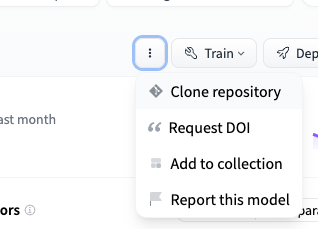How to run an LLM locally on CPU
I’ve been playing around with LLMs a lot lately. I’m interested in being able to run models locally for work, but many of the best models have very high memory bandwidth requirements. I came across the idea of quantization of a model, where the precision of a tensor is reduced in order to speed up inference and reduce memory requirements. This is the process I’ve learned to take almost any model and quantize it, making it possible to run the model effectively on CPU.
Set up Hugging Face
Hugging Face is like the Github of the AI world right now. If you want to get access to open source models, that is the place to be. You’ll want to sign up for an account, install the huggingface-cli and log in.
brew install huggingface-cli
huggingface-cli login
Set up llama.cpp
llama.cpp is a tool for running models on a wide variety of hardware. In order to set it up, first clone the repository
git clone git@github.com:ggerganov/llama.cpp.git
Then, build the project in the root of the repo
cd llama.cpp
make -j8
Download a model from Hugging Face
You can browse the available models here.
Choosing a model is beyond the scope of this post, but you might choose a model based on features, benchmarks, or number of parameters (more parameters means higher memory requirements and longer inference times, but hopefully better quality results).

Once you have chosen a model, click the “Clone respository” button and follow the instructions in the modal dialog.
In this example, I will be using
Meta Llama 3 3B Instruct
and saving it in a models directory that lives outside of the llama.cpp repo.
Quantize the model
Finally! We are now ready to quantize the model. Almost…
First we need to convert the model to gguf format. That is one of
the formats that llama.cpp can run inference with.
python convert.py ../models/Meta-Llama-3-8B-Instruct/ --outfile ../models/Meta-Llama-3-8B-Instruct.gguf --outtype f16 --vocab-type bpe
Ok, now we can quantize. This command takes the .gguf we generated in
the last step and creates a new one using the q4_k_m method, which
quantizes to 4-bits.
./quantize ../models/Meta-Llama-3-8B-Instruct.gguf ../models/Meta-Llama-3-8B-Instruct_q4_k_m.gguf q4_k_m
Run the model!
You can run the model as a REPL:
./main -m ../models/Meta-Llama-3-8B-Instruct_q4_k_m.gguf -t 16 -n 256 --repeat_penalty 1.0 -f prompts/chat-with-bob.txt --color -i -r "User:"
Or as a web server:
./server -m ../models/Meta-Llama-3-8B-Instruct_q4_k_m.gguf -t 16 -n 256